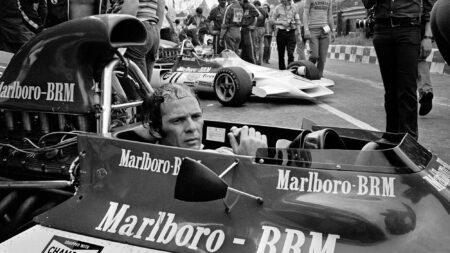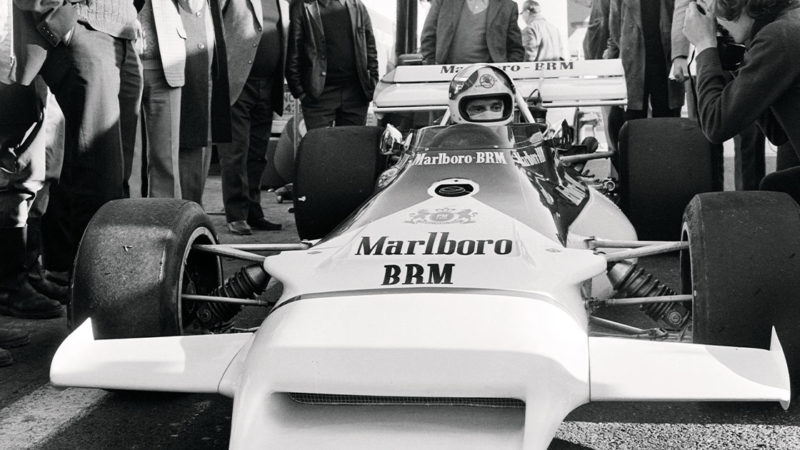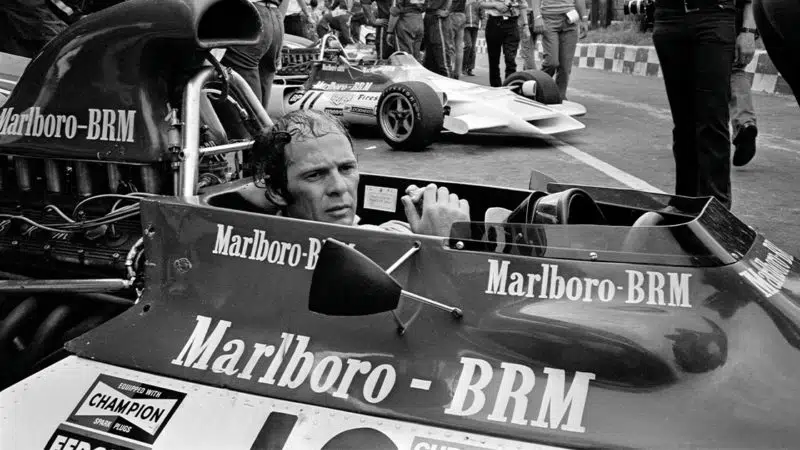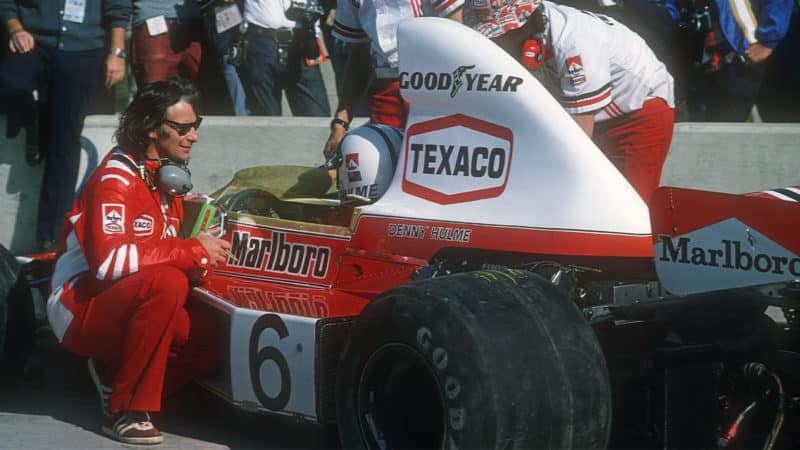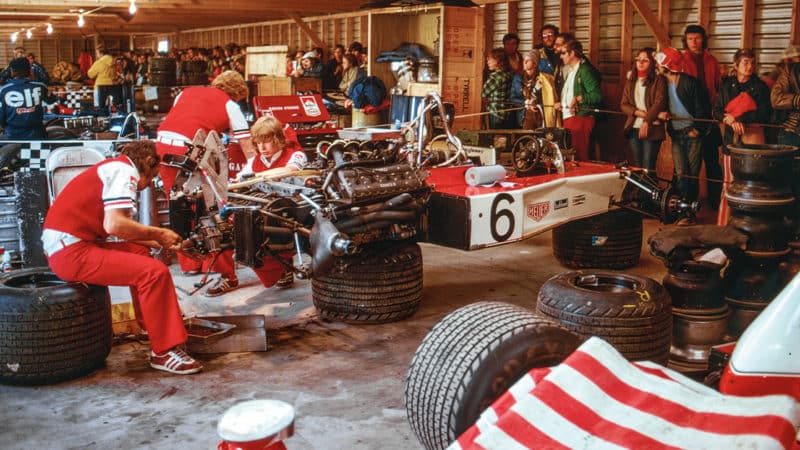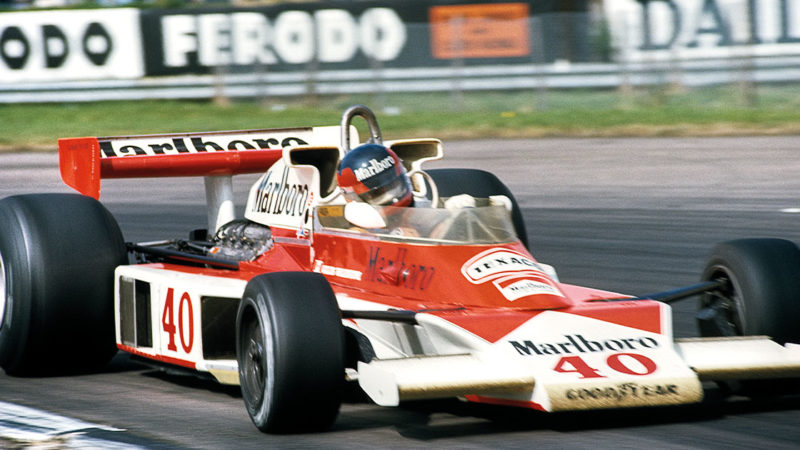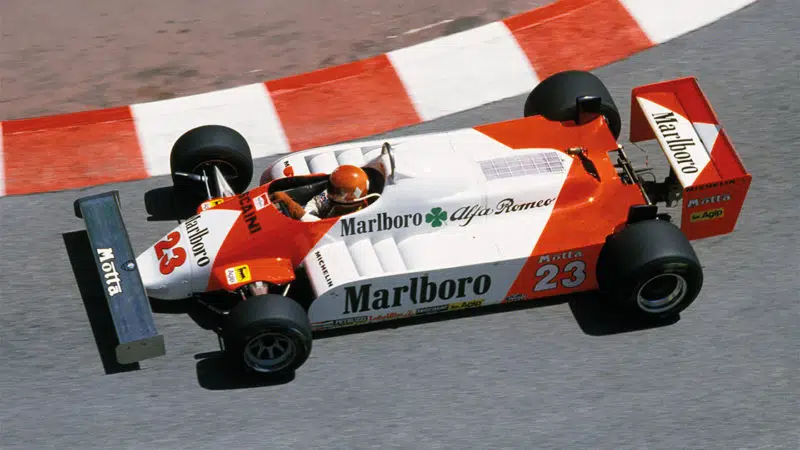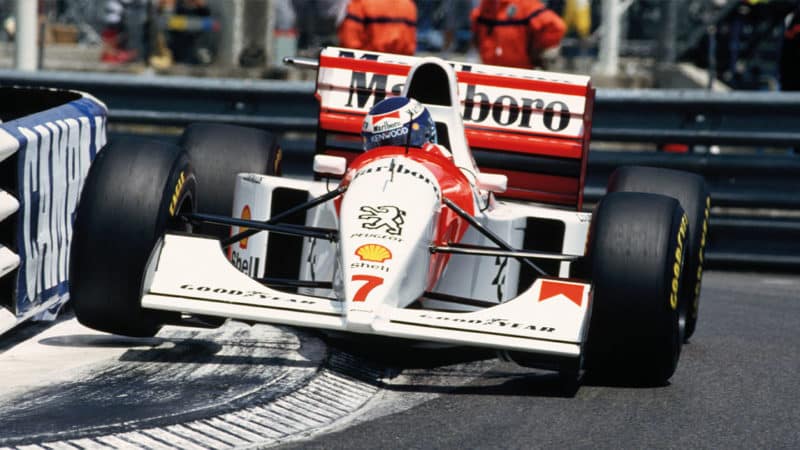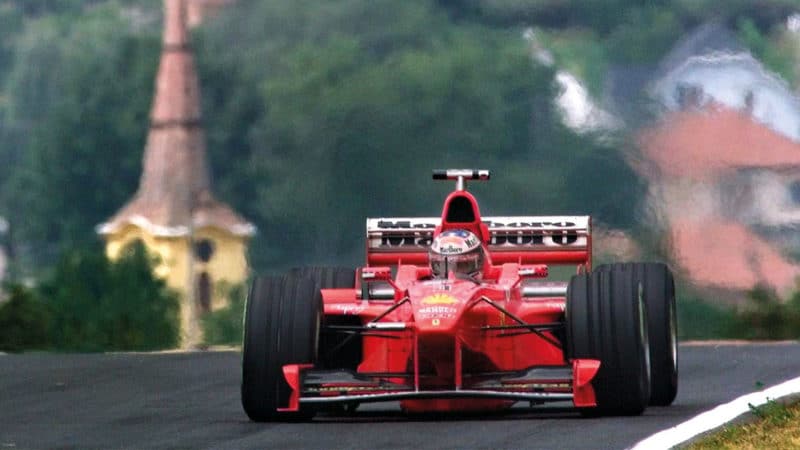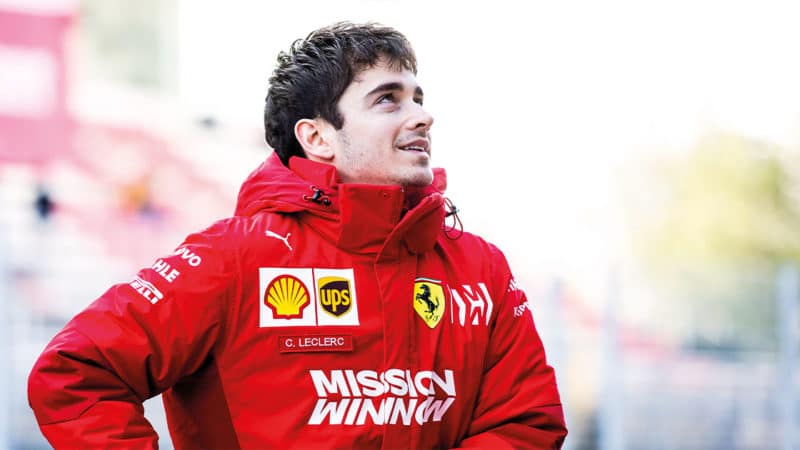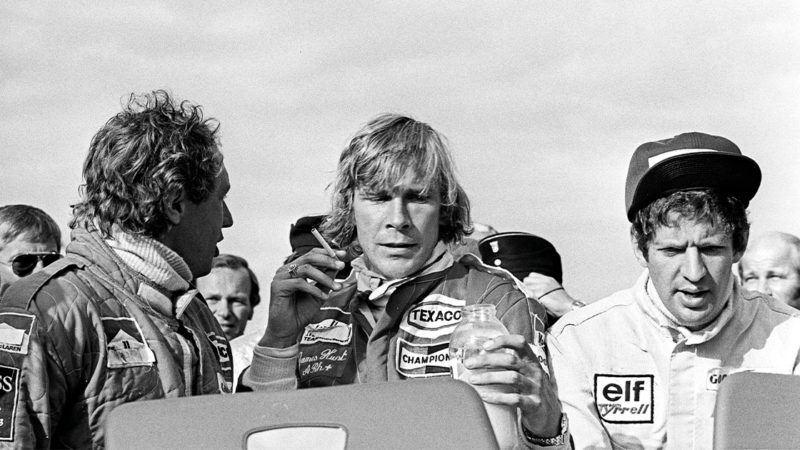With Phillip Morris’ title sponsorship of Ferrari finally ending in 2022, it brings to a close the intertwined 50-year journey of F1 and Marlboro – for now.
It was a period when giants walked the earth, F1 legends were made and grand prix cars often really did represent cigarette cartons on four wheels. Motor racing purportedly represented a hedonistic and carefree world powered by individualism, with Marlboro intending to bask in this glorious image.
The cigarette manufacturer’s premier brand first entered motor racing’s top-tier with BRM in 1972, the company announcing itself with a typically understated PR stunt of an F1 car exploding out of a gigantic Marlboro packet.

Entry into grand prix racing came with BRM
GP Library/Universal Images Group via Getty Images
“We could see that advertising was coming to an end and we needed [another way] to make ourselves visible,” said John Hogan, the Marlboro marketing man who brought the brand into grand prix racing. “F1 was a way of doing that on the international stage. We were trying to do it before the black curtain came down.”
Two years later and the brand leapt ship to McLaren, forming one of the most iconic team and sponsor combinations in sporting history. Though Emerson Fittipaldi was the first driver to take a title in the brand’s colours – the company funding his move from Lotus – it was James Hunt who would first become ingrained in the public’s consciousness as a champion driver decked out in particular shades of red and white.

